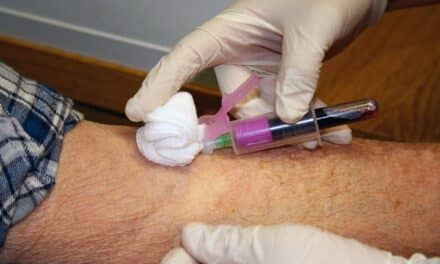Studies conducted by Biolinq, San Diego, have demonstrated the feasibility of a minimally invasive continuous glucose monitor, showing a high correlation between dermal interstitial glucose and venous blood glucose.1
“The team at Biolinq has been working for many years to establish the benefits of dermal sensing for continuous glucose monitoring,” says Jared Tangney, PhD, chief operating officer at Biolinq. “We are thrilled to share the promising feasibility data from our recent studies. We believe that these positive data are a major step toward making this product a reality for people with diabetes.”
Biolinq’s novel platform uses dozens of miniature sensors, each less than 1 mm in length, to continuously measure blood glucose in the outer layer of the skin (the dermis). The product has no introducer needle, so application of the sensors is pain-free. The device can be worn almost anywhere on the body.
Phase 1 of the company’s studies consisted of five people without diabetes and 10 people with diabetes who wore the Biolinq sensor for 2 days. In the second phase, 10 subjects with diabetes wore the Biolinq sensor for 7 days. Data from the Biolinq devices were compared to venous blood reference measurements.
“I am very encouraged by Biolinq’s data, especially the high correlation between the raw sensor signal and the blood glucose, and the absence of the venous to interstitial fluid glucose lag time,” says Mark Christiansen, MD, comedical director of Diablo Clinical Research.
Further studies of the Biolinq continuous glucose monitor are planned for later this year. The current Biolinq monitor is an investigational device available for use only in approved clinical studies. The company is targeting clearance of the device through FDA’s integrated continuous glucose monitor pathway.
For more information, visit Biolinq.
Reference
1. Samant P, Christiansen M, Bhavaraju N, et al. A wearable microneedle array sensor shows high correlation between dermal glucose and venous blood glucose [abstract, online]. Poster presented at the virtual scientific sessions of the American Diabetes Association, Arlington, Va, June 12–16, 2020. Available at https://bit.ly/3hR17iu. Accessed June 22, 2020.




